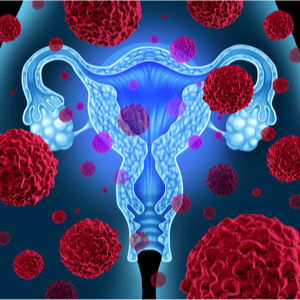
Cervical cancer and how it develops
About 4,600 women in Germany are diagnosed with cervical cancer every year. Cervical cancer develops in the lower part of the uterus (cervix) and is detected early enough in two thirds of all cases so that there is a good chance of a cure. Since cervical cancer can be triggered after an infection with human papilloma viruses (HPV for short), doctors advise people to get vaccinated against it. Smoking and many pregnancies also increase the risk of cervical cancer. Once cervical cancer has been diagnosed, surgery is performed, at least in the early stages. Advanced tumours are treated with a combination of radiation and chemotherapy.
What symptoms indicate cervical cancer?
If the cancer is still in its early stages, it usually does not cause any symptoms. Cervical cancer usually develops unnoticed at first. Some non-specific symptoms that may indicate cervical cancer are:
- a vaginal discharge that may smell bad,
- Bleeding that occurs after sexual intercourse,
- Bleeding outside of menstruation, or after menopause
However, these symptoms are complaints that can also occur in connection with an inflammation or a benign growth. If the cervical cancer is more advanced, the lower back and pelvic area may hurt. It is also not uncommon to experience discomfort during urination and/or bowel movements and lymphatic congestion in the legs. In order to diagnose cervical cancer early, women over the age of 20 should take part in screening examinations and have regular cell smears taken from the cervix.
How is cervical cancer diagnosed?
Cervical cancer is usually diagnosed by the gynaecologist. At the beginning of the gynaecological examination, the doctor palpates the cervix, the cervix, the uterus and the ovaries through the abdominal wall and the vagina. As a rule, a Pap smear is also taken. If the suspicion of cervical cancer is confirmed, further examinations are carried out, such as an ultrasound scan. If a tissue sample is found to be abnormal, it may be removed. However, it is not uncommon for a patient to be referred to an outpatient clinic that specialises in this area, as these clinics are equipped with the appropriate diagnostic equipment and testing facilities.
How is cervical cancer treated?
If the cervical cancer is not too advanced, it is usually removed surgically. Doctors distinguish between the following three surgical procedures:
- Conisation: If the tumour is detected early and is still relatively small, it is surgically removed by cutting out part of the cervix.
- Trachelectomy: This surgical procedure also involves removing part of the cervix. A subsequent pregnancy is still possible afterwards. However, trachelectomy can only be used if the tumour is very small and has not yet affected the lymph nodes.
- Hysterectomy: Doctors advise this procedure if family planning has already been completed, as the uterus is surgically removed and pregnancy is no longer possible afterwards. At this point, the tumour has already penetrated deep into the tissue. For many women, the loss of the uterus is also psychologically very stressful.
For advanced tumours, a combination of radiation and chemotherapy is used. Patients complain about various side effects, such as damage to the mucous membranes in the vagina, intestine and bladder. In addition, the radiation of lymph nodes can cause swelling of the legs (lymphoedema). If the cancer is already far advanced and a cure is unlikely, doctors may also advise the use of medicines (chemotherapy and antibody therapy) to slow down the growth of the cancer for a while. However, these drugs can be harmful to the kidneys, nerves and hearing.
